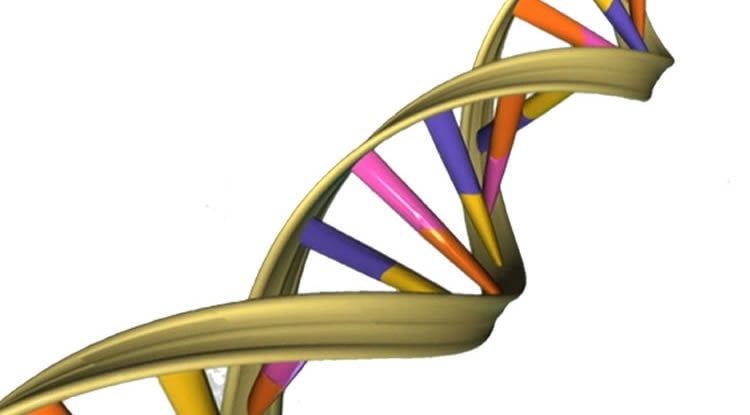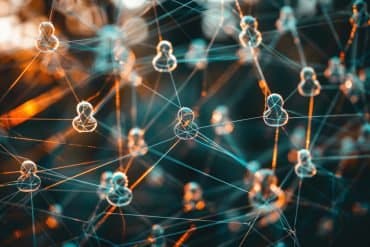Summary: Researchers believe their findings could open the door for new therapy strategies to treat glioma multiforme brain cancer.
Source: M.D Anderson Cancer Center.
Study finding could open up new therapy strategies for glioma multiforme.
Astronauts survive in space by wearing high-tech space suits. But how do brain cancer cells thrive when they migrate to inhospitable sites within the brain?
A study at The University of Texas MD Anderson Cancer Center believes their survival may be due to deficiency of a tumor suppressor gene called quaking (QKI), a potential new target for therapies. Findings from the study, led by Jian Hu, Ph.D., assistant professor of the Department of Cancer Biology, were published in the Nov. 14 online issue of Nature Genetics.
“Cancer stem cells require ‘niches’ to remain viable but it is unclear how they survive in an environment outside of these niches both within the same tissues or during invasion to other organs,” said Hu. “We discovered that QKI is a major regulator of these cancer stem cells in glioblastoma, the deadliest type of brain tumor.”
“Evidence is emerging that some brain cancer cells called glioma stem cells possess an inexhaustible ability to self-renew and produce tumors that resemble the features of original tumors,” said Hu.
Self-renewal is a unique feature of all stem cells that creates identical “daughter” stem cells. To maintain this ability, they must be in a suitable environment providing them proper cellular cues. Hu’s team knew that glioma stem cells thrived when they reside in niches, such as structures called subventricular zone, due to their ability to self-renew.
“However, left unanswered is how glioma stem cells still manage to maintain this ‘stemness’ when they invade and migrate from their niches to other areas where optimal niches are less likely to be available,” said Hu.
The research team believed glioma stem cells must acquire the ability for stemness maintenance independent of their niches during invasion and migration. Using a mouse model, they studied deletion of major suppressing genes including QKI to see what correlation might exist.
“Our previous studies showed that QKI is one of the tumor suppressor genes that can potentially regulate cancer stem cells and we confirmed this in our latest investigation,” said Hu.

QKI impacted a vital cellular activity called endocytosis, responsible for degrading the cell receptors that are essential for maintaining stem cell self-renewal. Loss of QKI can greatly enrich the level of these receptors and consequently enhance the self-renewal capacity even when glioma stem cells are not in the niches. Just as a space suit protects the astronaut from the dangers of space, a deficiency of QKI makes the new environment safe for the transported cancer stem cell.
“This study may lead to cancer therapeutic opportunities by targeting the mechanisms involved in maintaining cancer stem cells,” said Hu. “Although loss of QKI allows glioma stem cells to thrive, it also renders certain vulnerabilities to the cancer cells. We hope to design new therapies to target these.”
MD Anderson study participants included Takashi Shingu, Ph.D., Liang Yuan, Ph.D., Xin Zhou, Ph.D., Congxin Dai, Ph.D., and Baoli Hu, Ph.D., all of Cancer Biology; Siyuan Zheng, Ph.D., and Qianghu Wang, Ph.D., Genomic Medicine; Yiwen Chen, Ph.D., and Roeland Verhaak, Ph.D., Bioinformatics and Computational Biology; Yi Zhong, Ph.D., Epigenetics and Molecular Carcinogenesis; James Horner, Institute for Applied Cancer Sciences; Brandon Liebelt, M.D., Amy Heimberger, M.D., and Qing Chang, M.D., Ph.D., Neurosurgery; and Gregory Fuller, M.D., Ph.D., Pathology.
Other participating institutions included Stanford University, Stanford, Calif.; Houston Methodist Neurological Institute, Houston; and Fudan University Huashan Hospital, Shanghai.
Funding: The study was funded by The National Cancer Institute (2P50CA127001) and the National Institutes of Health (R00 CA172700 and CA120813).
Source: Ron Gilmore – M.D Anderson Cancer Center
Image Source: This NeuroscienceNews.com image is in the public domain.
Original Research: Abstract for “Qki deficiency maintains stemness of glioma stem cells in suboptimal environment by downregulating endolysosomal degradation” by Takashi Shingu, Allen L Ho, Liang Yuan, Xin Zhou, Congxin Dai, Siyuan Zheng, Qianghu Wang, Yi Zhong, Qing Chang, James W Horner, Brandon D Liebelt, Yu Yao, Baoli Hu, Yiwen Chen, Gregory N Fuller, Roeland G W Verhaak, Amy B Heimberger & Jian Hu in Nature Genetics. Published online November 14 2016 doi:10.1038/ng.3711
[cbtabs][cbtab title=”MLA”]M.D Anderson Cancer Center. “Gene Deletion Allows Cancer Cells to Thrive When Migrating Within the Brain.” NeuroscienceNews. NeuroscienceNews, 14 November 2016.
<https://neurosciencenews.com/brain-cancer-gene-deletion-5509/>.[/cbtab][cbtab title=”APA”]M.D Anderson Cancer Center. (2016, November 14). Gene Deletion Allows Cancer Cells to Thrive When Migrating Within the Brain. NeuroscienceNews. Retrieved November 14, 2016 from https://neurosciencenews.com/brain-cancer-gene-deletion-5509/[/cbtab][cbtab title=”Chicago”]M.D Anderson Cancer Center. “Gene Deletion Allows Cancer Cells to Thrive When Migrating Within the Brain.” https://neurosciencenews.com/brain-cancer-gene-deletion-5509/ (accessed November 14, 2016).[/cbtab][/cbtabs]
Abstract
Qki deficiency maintains stemness of glioma stem cells in suboptimal environment by downregulating endolysosomal degradation
Stem cells, including cancer stem cells (CSCs), require niches to maintain stemness, yet it is unclear how CSCs maintain stemness in the suboptimal environment outside their niches during invasion. Postnatal co-deletion of Pten and Trp53 in mouse neural stem cells (NSCs) leads to the expansion of these cells in their subventricular zone (SVZ) niches but fails to maintain stemness outside the SVZ. We discovered that Qki is a major regulator of NSC stemness. Qk deletion on a Pten−/−; Trp53−/− background helps NSCs maintain their stemness outside the SVZ in Nes-CreERT2; QkL/L; PtenL/L; Trp53L/L mice, which develop glioblastoma with a penetrance of 92% and a median survival time of 105 d. Mechanistically, Qk deletion decreases endolysosome-mediated degradation and enriches receptors essential for maintaining self-renewal on the cytoplasmic membrane to cope with low ligand levels outside niches. Thus, downregulation of endolysosome levels by Qki loss helps glioma stem cells (GSCs) maintain their stemness in suboptimal environments outside their niches.
“Qki deficiency maintains stemness of glioma stem cells in suboptimal environment by downregulating endolysosomal degradation” by Takashi Shingu, Allen L Ho, Liang Yuan, Xin Zhou, Congxin Dai, Siyuan Zheng, Qianghu Wang, Yi Zhong, Qing Chang, James W Horner, Brandon D Liebelt, Yu Yao, Baoli Hu, Yiwen Chen, Gregory N Fuller, Roeland G W Verhaak, Amy B Heimberger & Jian Hu in Nature Genetics. Published online November 14 2016 doi:10.1038/ng.3711






